Everyone loves Moon Handbooks - they are, by far, the most interesting travel guidebooks available. Packed with photos, tips, and the essence of place, these are guides for thinking people, that love to learn more, more, more about where they are going. Recently we were sent a review copy of Moon: New York State. Written by one of my favorite travel writers, Julie Schwietert Collazo, with extraordinary photos from her photographer husband, Francisco Collazo, this book is a must-read. Hands down, it is the best travel guide to New York I've ever seen.

What will you learn, in this book? Well, just about everything you didn't know you needed to know about the state of New York! Collazo does a remarkable job bringing the culture, people, and state to life - and entice you to visit. This Moon Handbook is packed with recommendations on what to see and do - and the details necessary to do so. Here's a tip - start at the back, with the Background and Essentials chapters. Reading those will give you a bit more context about New York - and traveling there. I love this book. I've been to New York, and enjoyed it. But whether you've traveled there, or are planning a trip, or just want to immerse yourself in the state, this is the book to read.

New York's Finger Lakes
I was so impressed with this book - and the enormous amount of research that went into it - that I interviewed Collazo for the backstory. Here's what she had to say...
Please tell us about your new book, Moon: New York State...
This is the sixth edition of this particular guidebook and the first time that I'm authoring it. Moon's guidebooks are somewhat unique in that they are authored by a single writer, and each writer works with her or his editor to review and, when appropriate, reimagine the structure, organization, and content of the book. There was no easy way to divide the state into neat chapters that would satisfy everyone, and a lot of the writing I'd hoped to do was eclipsed by massive amounts of fact-checking in sections that hadn't been updated in ages, but I'm really happy to say that my editor and I managed to introduce some new types of themed itineraries in this edition and to give some more space and attention to parts of the state that had been overlooked for far too long. I hope that readers will be as excited by the changes as I am.
I'm also really happy and proud to say that my husband, Francisco Collazo, shot most of the photographs for the book, and there's a visual richness in this edition that's very special.
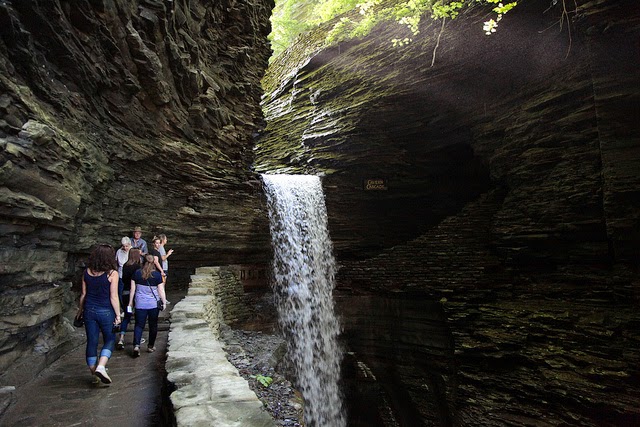
Watkins Glen State Park in Watkins Glen, New York (Finger Lakes region). This beautiful state park is about 9 seconds off the main road in Watkins Glen, which is also home to NASCAR in New York and is a great base for exploring the Finger Lakes' Wine Country.
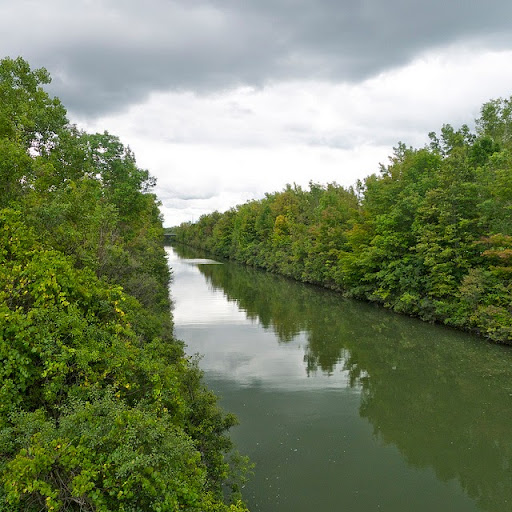
Erie Canal
What inspired you to write this travel guide?
To be entirely honest, I wasn't so much inspired--at least not initially-- as I was motivated by a few practical/professional aims. Prior to the birth of my second child in August of 2013, most of my work, both in travel and other topical niches, was primarily related to Latin America, the Spanish-speaking Caribbean, and Latinos in the U.S. But after my second child was born, I had to start thinking more pragmatically about my career. My husband, who is a photographer, is often my collaborator: could we afford to be doing so much travel outside the country with two kids? If I traveled alone, what kind of burden was it putting on him to be wholly responsible for two kids rather than one, especially since our first was starting school? I didn't want to stop working in/on/about Latin America (and I haven't), but I wanted to broaden my scope of work by developing some geographical expertise closer to home. I saw that as a win-win-win strategy: My husband and I could continue to collaborate together; our kids could travel with us more easily; and we could manage travel expenses more effectively. I saw the guide, then, as a way to establish myself as an authority on New York and to develop his portfolio of images.We've worked on other guidebooks before (Fodor's Puerto Rico, Fodor's Caribbean, DK Eyewitness Mexico), and I've found that they're good projects for opening doors to other work.
The inspiration came later in the process-- the process of researching. Once I was in the thick of things, the practicalities of having taken on this project became secondary. It's always nice when that happens. Now, I have this residual inspiration from the process of writing the book; I'm inspired to keep its content fresh in the next edition and, in the interim, I'm inspired to find as many ways as possible to share stories and useful information about New York State with travelers.
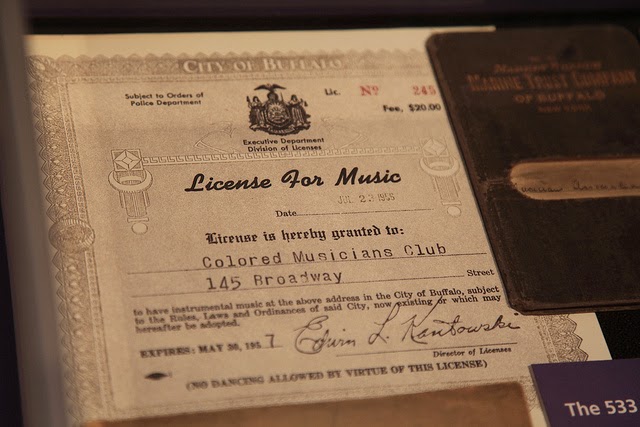
Yes, when you're in Buffalo-Niagara, you have to visit Niagara Falls. But in Buffalo proper, take the time to visit some lesser-known sights, including the Colored Musicians Club. Buffalo, which I also love because of its architecture and its passionate preservation movement, played a crucial role in both abolitionist and civil rights history, and the Colored Musicians Club is one place to learn more about that history. Museum is downstairs; a functioning music club is upstairs.
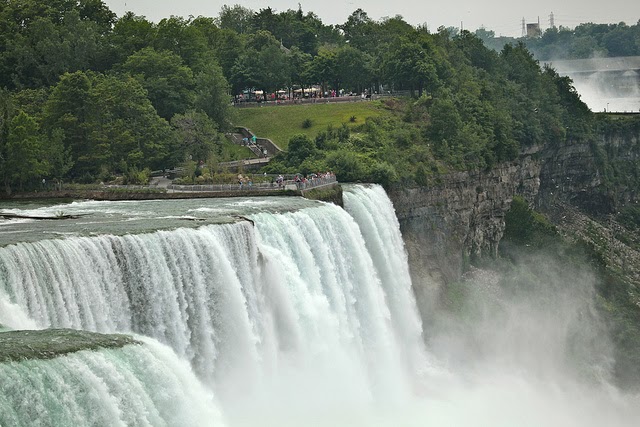
Niagara Falls
I'm all about the research - what was it like, researching your book? What surprised you the most?
I am passionate about research; it's just as fun and fascinating for me as writing. What was most surprising to me was how much it drew me in, how much there was to learn about it, and how little I knew about my own backyard. I've lived in New York City since 1999 and I realized that, like most city dwellers, I'd made a huge, huge mistake by thinking that New York begins and ends at New York City. I adore New York City, of course, but there's so much beyond it: so much incredible and diverse geography. So much important history. So many untold stories. And so many fascinating, hospitable, passionate people engaged in all sorts of interesting projects... like a couple we met in the town of Cuba, New York, who has spent the past five years of their lives rehabilitating the town's old opera house.
I traveled all over New York State, visiting sites, talking to people, listening to them. I read decades-old guidebooks, like the WPA Guide to the Empire State and WPA New York City, literary classics and historical documents about the state, and dozens upon dozens of other sources. I collected and studied maps, finding places I'd never known existed. I pored through statistics of all kinds. And I made A LOT of phone calls: fact-checking, confirming places were still open, that sort of thing.

Talk about unusual places! This is the interior of Grant Cottage, just outside Saratoga Springs, where President Grant went to finish his memoirs before he died (his death bed is in the cottage). What you see here are funeral wreaths that are still really well-preserved, more than 125 years after his death. The cottage is on the grounds of what is now a state prison... so to visit (yes, it's open to the public), you have to show ID to prison security! (This might change soon, though; this prison is one of several around the state that's been marked for possible closure.)
Describe New York State to someone from outer space - what would you say (besides read my book!)?
First of all, New York State is BIG. It's not the biggest state-- it's not even in the top 25 in the U.S. in terms of square miles-- but the range of its geographical diversity is so expansive and its pockets of cultural communities so distinct from one another that the state seems bigger than it is. And it has so many superlatives (biggest this, oldest that, etc) that you could easily spend a good bit of your life just exploring New York State without getting bored or seeing the same thing twice.
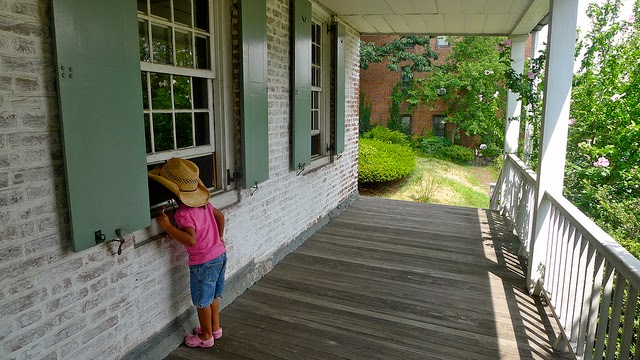
Our daughter, Mariel, looking into the Dyckman Farmhouse, the last colonial Dutch farmhouse in Manhattan.
What is the most unusual thing you discovered about New York, while researching your book?
This may not strike anyone other than me as unusual, but I was surprised to observe an interesting trend: as New York City becomes more and more what I call "Chipotlified" (ie: rents so high that only chains with major monetary power can afford to occupy storefronts, forcing Mom and Pop stores out of business), tiny towns in the middle of the state and upstate are developing these maker classes and communities that are thriving. The reason I think this is unusual is because many of the towns seem too small, population-wise, to be able to support these businesses, but over and over again, I was told that the people in these communities made a commitment to one another that they would "go local," prioritizing independent businesses with heart and spirit and familiar faces over things like the convenience and cheaper prices of Amazon Prime and the like. I was particularly impressed by the town of Cambridge, New York and its independent bookstore, Battenkill Books, which, in addition to having a fantastic inventory, has an amazing, full roster of activities and events.

The lovable indy bookstore, Battenkill Books, in Cambridge, New York.
What's up next for you?
Promoting the book will definitely be taking up some of my time, as will looking for outlets where I can pitch stories about people and places that didn't make it into the book, whether because of space considerations or because they just didn't fit in terms of the content that people are seeking when they're planning a trip. And I always have lots of irons in the project fire, so I'm working on a book proposal (totally unrelated to guidebooks) and articles for all my usual outlets, which people can learn about and track on my blogs (www.collazoprojects.com and www.cuadernoinedito.wordpress.com) and on twitter and instagram (@collazoprojects). I'm also about two weeks away from giving birth to our third child, so getting her passport application filled out and adding another car seat to our travel kit are priorities.

All over New York State, Francisco and I found passionate people working on all sorts of projects that we'd never heard about. One couple in the town of Cuba, New York, has spent most of their money and waking hours over the past five years restoring this opera house from the late 19th-century.
Is there anything else you'd like to share?
People often ask whether apps and other digital sources of travel planning information are better or more useful than print guidebooks. I've worked on apps, too, and I can honestly say that all platforms--digital and print-- are subject to the same kinds of limitations. Yes, apps and digital resources seem more nimble... they can (theoretically) be updated more regularly. But you have to first have someone who can and will update them (ideally, someone who does this for a living and is getting compensated fairly to do the work), and that person really needs to be someone who has both a passion for a particular place and a close knowledge of it, someone who keeps up with all sorts of developments related to it-- not just population statistics and attraction closures, but other, more subtle kinds of changes that you'll only notice and find significant if you're in a place. Increasingly, guides are being put together by people who are researching from a desk; they're not out in the world fact-checking and story-gathering in person. So don't assume that one is necessarily better than the other. It depends upon where you, as a reader, are placing emphasis in determining the value of the guide you're consulting.

Imagine you're driving along in the woods of New York State when, suddenly, you come upon a set of wooden buildings with gold onion domes... where monks train German shepherds and nuns make cheesecake and sell it on the honor system. Yep, pretty surprising! And a sign that you've arrived at New Skete, a world-famous monastery in the middle of (seemingly) nowhere.
Learn more at: http://moon.com/books/moon-new-york-state/
All photos courtesy and copyright Julie Schwietert Collazo
Hands down, this is the best travel guide to New York I've ever seen.
Posted by:
Jessica Voigts
